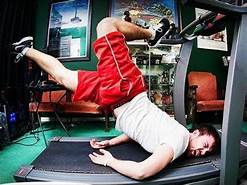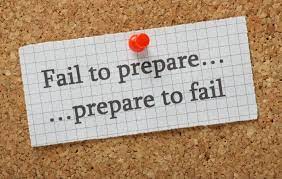During a recent preparedness presentation on 72 hour bags I gave to the IT dept. at my work one of the questions that popped up at the end was, "What about guns and firearms?" This was a loaded question (no pun intended) if I ever heard one considering today's environment, but I provided a sufficiently, politically correct answer in my opinion. Explaining that I am firearms enthusiast and a "2nd Amendment proponent", I also clarified that "guns are not for everybody", regardless of the opinions of some folks out there. I then recommended some less-than-lethal alternatives for affective self defense without the need to put a (preferred) 3" hole in an attackers chest.
However, non-or-less-than-lethal measures come with a training and proficiency requirement which, in some ways, is just as important as training and proficiency with a firearm. It's a shock to many people when I advise that just buying pepper spray or a stun gun and tossing it in your purse or vehicle's glove box is not sufficient. You need to intimately familiarize yourself with these items for them to be truly affective in a self defense scenario. Below I'll break down some of the pros and cons of the more common less-than/non-lethal self defense implements and strategies.
Disclaimer: Before pursuing any of these options, check local laws and regulations to ensure you remain within legal bounds when purchasing or carrying these items.
Also, please note that I'm not addressing the "bringing a knife to a gun fight" concept here. It's assumed that there is a power discrepancy between attacker and victim in which the protective tools and strategies listed below provide an equalizer for the victim's defense.
How can personal chemical warfare not be fun for the whole family? Pepper spray is one of the most common and readily accessible non-lethal options of self defense out there. It's relatively inexpensive and easy to find, even at your local Wal-mart or typical sporting goods store. Pepper spray comes in a wide variety of options. These include disabling compounds such as (literally) chili pepper extracts, and deployment methods such as an aerosol spray or gel stream.
Pros
Pepper spray canisters are very compact and can easily be attached to keychains or staged in purses. They're very easy to use with a small locking lever that's easily shifted into active status, and a simple push-button and aim process. Potency can vary, and some self defense instructors recommend upgrading to actual
bear spray for maximum effectiveness against burly human beings.
Many versions of pepper spray also contain a dye that's visible only in ultraviolet light. This allows for quick identification of the attacker by law enforcement during their investigation after an assault.
Cons
Dispersal, especially the aerosol kind, can be hazardous. Discharging pepper spray into the wind can easily blow back into the face of the victim rendering both them and the attacker helpless to the point it becomes a race to see who recovers faster and either escapes or continues the assault.
Less expensive pepper sprays can be less affective and not adequately stop an attacker.
Stun Guns and Tasers
A good friend of mine was considering buying a stun gun for his petite, real-estate broker wife while we were at a prepper show one time. The vendor offered him 10% off if he but-briefly shocked himself with the gun. My friend (I'll call him "Larry"), who's an adventurous as well as frugal sort, started seriously considering it, pacing back and forth and asking me what I thought. Now I'm too old for such nonsense myself, so I tossed my hands up with a grin and stepped out of the situation to go shop for freeze-dried food. A few minutes later from across the vendor hall my son and I heard the easily recognizable pop pop of the stun gun along with Larry's yell of surprise. It wasn't long after when Larry was walking up to us with a slight limp and a self-satisfied smile at having saved 10% off his purchase.
Stun guns and tasers both provide an electric current through the body of an attacker, rendering said-attacker temporarily disabled so the victim can make their escape.
Pros
I've seen 280lbs ex-cons go down instantly after getting stunned in the buttocks. Their explanation later was that they'd never felt such pain. Tasers and stun guns are also readily available in most States. Tasers come in a variety of deployment configurations, from wand-like devices so you can feel like Harry Potter (yelling
Expecto Patronum! just adds to the satisfaction of sending your attacker to the floor in a writhing, quivering ball of flesh), to gun-type devices which work just like a firearm in a point-and-shoot feel.
Cons
Stun guns deliver their charge on-contact meaning you have to be up close and personal with your attacker to deploy. If you're that close to your attacker you're already losing, in my opinion.
Tasers, which deliver their charge through two projected prongs, can avoid this, but those prongs must make contact with the attacker's skin to be affective. Heavy clothing such as a parka or even a heavy hoodie, or a mis-fire where one prong doesn't make contact with the attacker, voids the counter attack completely.
I've also heard of attackers who are in an altered state (read: drugged out and trippin'), can be completely unaffected by either tase or stunning. I've seen video of this where a very high woman was tased by police officers no less than four times in a McDonalds where she'd gone on a French Fry rampage. The tasing offered little to no affect in stopping the meth'ed out Karen.
Batons, Baseball Bats, and Bludgeoning Implements
Beating the ever-living shit out of someone who'd been trying to attack you a few minutes prior can be pretty satisfactory, but doing so can be harder and more dangerous than most people consider. This class of self protection weaponry considers anything from a fancy stick to improvised items.
Pros
There's almost no end to what can be improvised into a self-defense bludgeoning weapon. I've seen modified pipe wrenches, legs of broken tables, and souvenir baseball bats and everything in between. Extendable batons are easily concealed on one's person or in a vehicle, and come in a variety of size options to suit the defender's needs. It's also hard to not look totally cool flicking one of those baton's into action and taking a ready posture which may very well intimidate your way out of a confrontation. Of course this image is quickly ruined when you have to find a slab of concrete to bang the tip against to retract the baton afterwards.
Again, using a bludgeoning weapon to protect one's self means your attacker has already gotten dangerous close to you. You run the risk of the weapon being taken from you and used against you at that point. On that note using a baton or other bludgeoning implement, frankly, requires training to be affective. Wildly swinging to try to just keep someone away from you, again, runs the risk of having the weapon taken from you. Get trained! Most martial arts studios will help you with this (for a fee of course).
The expandable baton's are illegal in several states and municipalities so, again, check local laws and regulations before purchasing or training with one.
Martial Arts
Pros
As the saying goes, training trumps gear. The three types of weapons above to provide a physical advantage in a self-defense scenario, however they fail or be taken from you. Being able to affectively fight with your physical body grants you access to self defense at all times including those times when any other weapon is simply not allowed such as a court house or Federal building or such. Additonally most martial arts programs offer training with weapons as well, making you even more affective with the bludgeoning class of weapons above.
Cons
Being an affective martial artist is a non-stop endeavor. It requires constant practice and at least a modicum of physical agility and strength. It's very unrealistic, even dangerous, to take an 8 hour rape-prevention class and believe you're "ready" for if that time comes. I would argue that the choice to become a martial artist is more of a life-style commitment more than a brief practice.
Health issues and even age can seriously and quickly diminish one's ability to utilize martial arts as a self defense option as well.
Final Thoughts
There are other options regarding non/less-than lethal self defense but in my experience these are the most common, often times because they're the most affective. Training and familiarity of usage cannot be over emphasized. I've been known to buy two containers of pepper spray and discharge one to see how it's going to disperse. There many good videos on YouTube regarding using the different kinds of pepper spray and tasers. Watch, read, and learn and, in the end, you may opt for more than one or even all of these options. Diversity is a very good thing.
In the end walking around city streets with an AR-15 strapped to your back or even a .45 on your hip isn't always practical or, to some, ethical, however this doesn't mean you have to be a victim by any means. There are many other extremely effective options to protect ones self, your family, and your preparations, and with just a little research and education the right choice can be made for your personal situation and goals.
Peace.

































